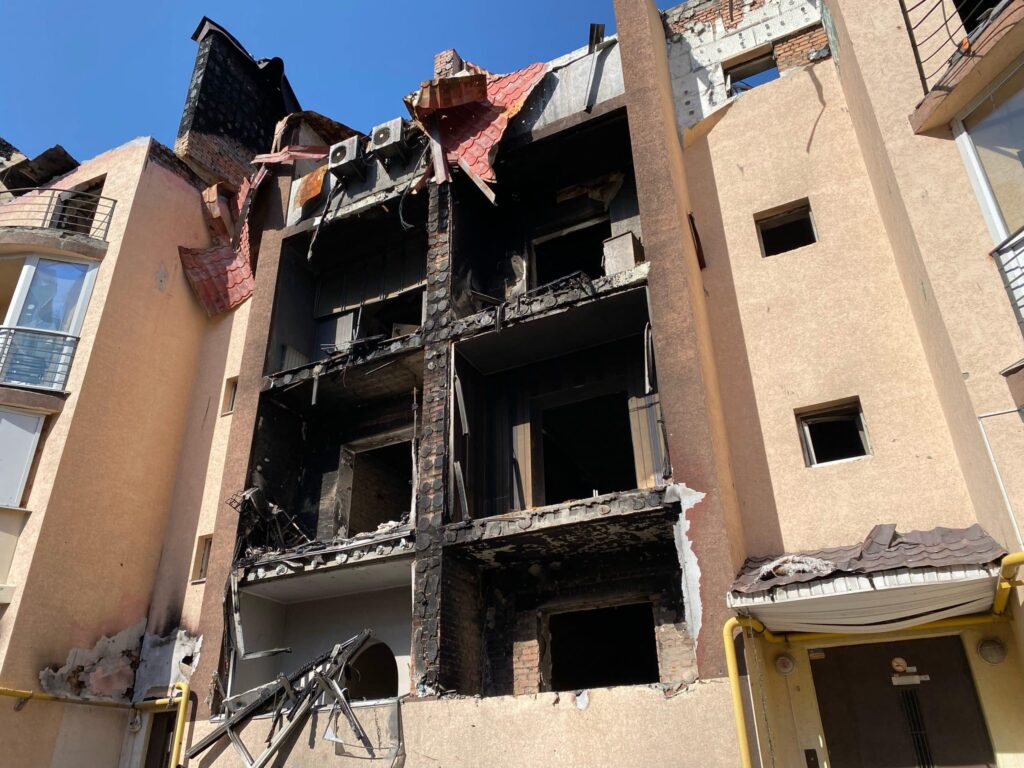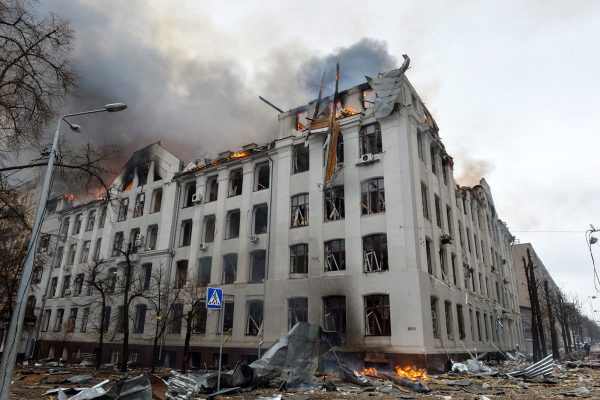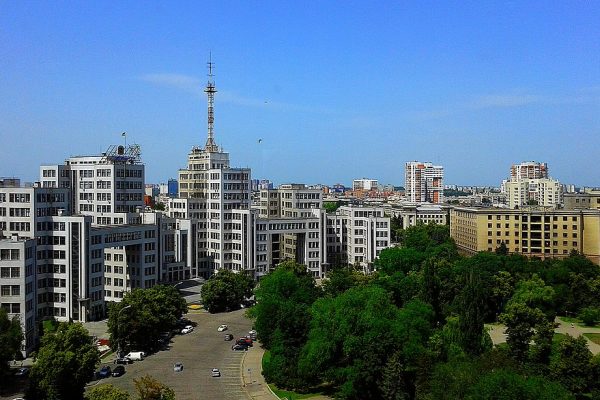In wartime what happens at the front matters immensely. But what happens in the rear—in society at large—matters too, even if it lacks the battlefield’s drama and urgency. I was reminded of this during a recent trip to Ukraine. What also became clear as I traveled through Ukraine was that as the war continues with no end in sight, the country’s ability to prevail at the front will depend on how badly the war damages a critical part of the rear: the economy.
Thanks to a street-smart friend who has spent considerable time in the country and come to know it well, I was able to venture far afield from Kyiv: to Kryvyi Rih (President Volodymyr Zelensky’s hometown), Nikopol, Dnipro, Kremenchuk, Cherkasy, and the outskirts of Donetsk.
Since the war began, Ukraine’s airspace has been closed to nonmilitary planes, so flying into Kyiv isn’t an option; it’s train, bus, or car—I chose car. Still, once I’d crossed the border from Poland into Ukraine, it was hard to comprehend that I’d entered a country that has been at war for nearly seven months against the world’s second most powerful military machine.
The ancient city of Lviv, just over forty miles from the Polish border, bustles with energy. At rush hour traffic chokes its streets. In the early months of the war, Lviv’s population swelled and rents soared. “Internally displaced people” (IDPs) from the areas hit hardest by the war started seeking safety there (as they did in numerous other Ukrainian cities), though for some it was a waystation to other border cities, such as Chernivtsi and Uzhhorod. Lviv still has many IDPs, but you wouldn’t know it.
Head east from Lviv to Kyiv—about seven hours by car—and the rolling, lush countryside radiates a deceptive calm. I was about fifty miles outside Kyiv before imposing military checkpoints with a clutch of soldiers materialized—a recent development, I was told. Until May, because of the gauntlet of checkpoints and the nighttime nationwide curfew, which remains in effect, the drive from western Ukraine to Kyiv could take twelve hours, sometimes even more than a day.
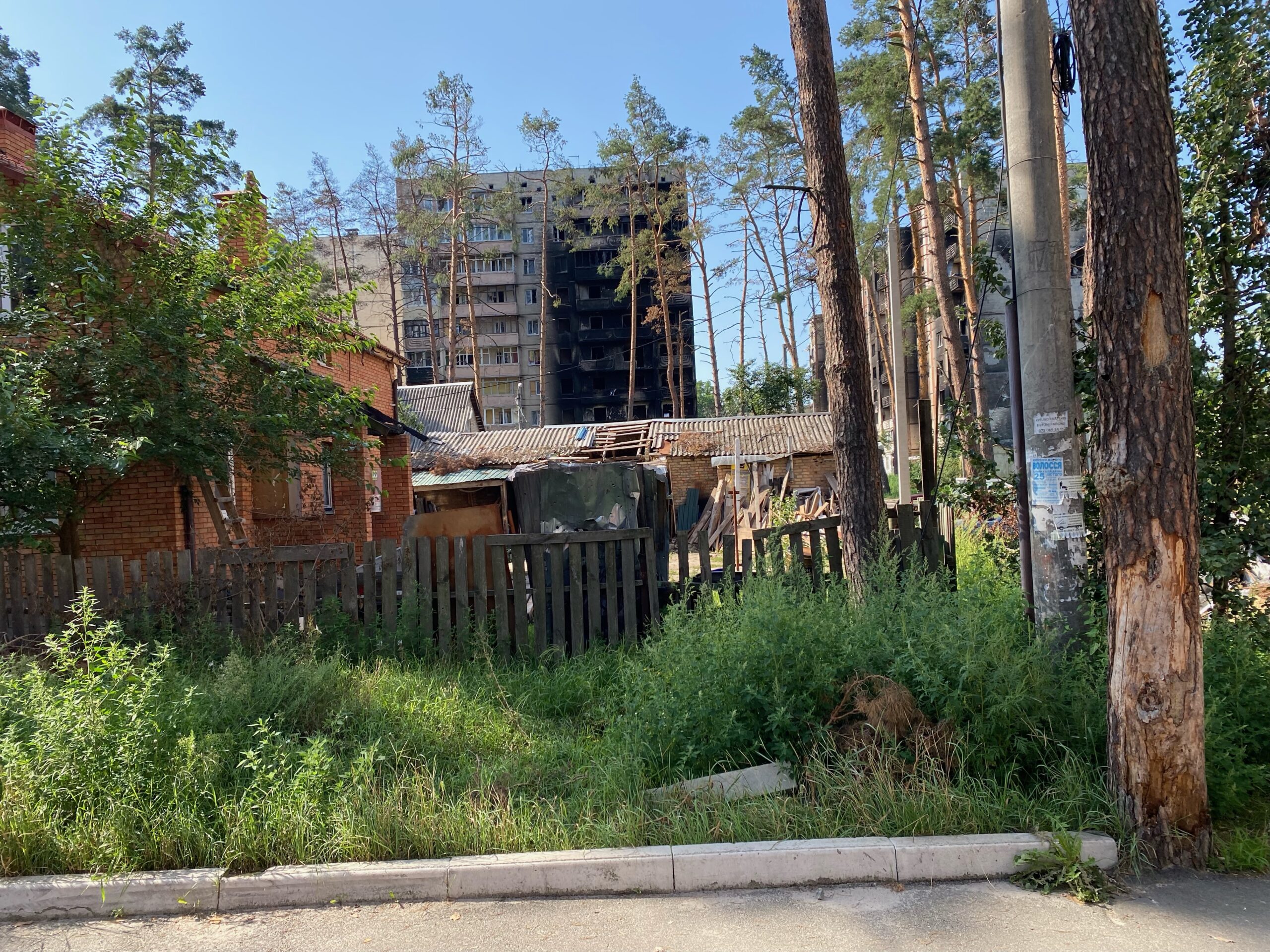
In Kyiv itself, despite the frequent missile strike alerts, the swanky restaurants and chic cafes remain jammed. Trendily dressed young people chat each other up as if they hadn’t a care in the world; people saunter through the streets, riveted by their smartphones; fancy cars line the busy streets. It certainly does not feel like prewar Kyiv, but in another sign of normalcy’s gradual return, Kyivans have started complaining about traffic again.
The normalcy is a façade, though. The war weighs heavily on everyone’s mind. Venture into the capital’s outskirts—to places such as Bucha, Hostomel, and Irpin—or travel to places near the frontlines—on barely passable pothole-filled roads—and the destruction the fighting has wrought is omnipresent. (The endless expanse of sunflower fields and rustic village homes provide welcome relief.)
Indeed, once you leave Kyiv far behind, there is no forgetting that you are in a country under attack. During my stay in Ukraine, only one day passed when warning sirens did not pierce the night, and sometimes the day, at least once. Ukrainians mostly shrug off these alerts. It is impossible to live in terror and apprehension daily for months on end and continue to function, even semi-normally. Still, the alerts are a reminder that the normalcy provided by daily routines can be shattered instantly by a missile strike. There is no shortage of stories describing this.
Moreover, the consequences of war—over 5,000 civilians killed, another 7,000-plus injured as of late July, cities destroyed, over 11 million refugees and IDPs, and a battered economy—are inescapable. Though millions of Ukrainian refugees have returned home from neighboring European countries, their jobs have largely vanished. Annualized inflation, which hit 22.2 percent in July, more than double what it was before the war, makes getting by even harder, especially for those from poorer regions in Ukraine’s south and east. The places where people shopped, the clinics they relied on, and the schools their kids attended may no longer be standing.
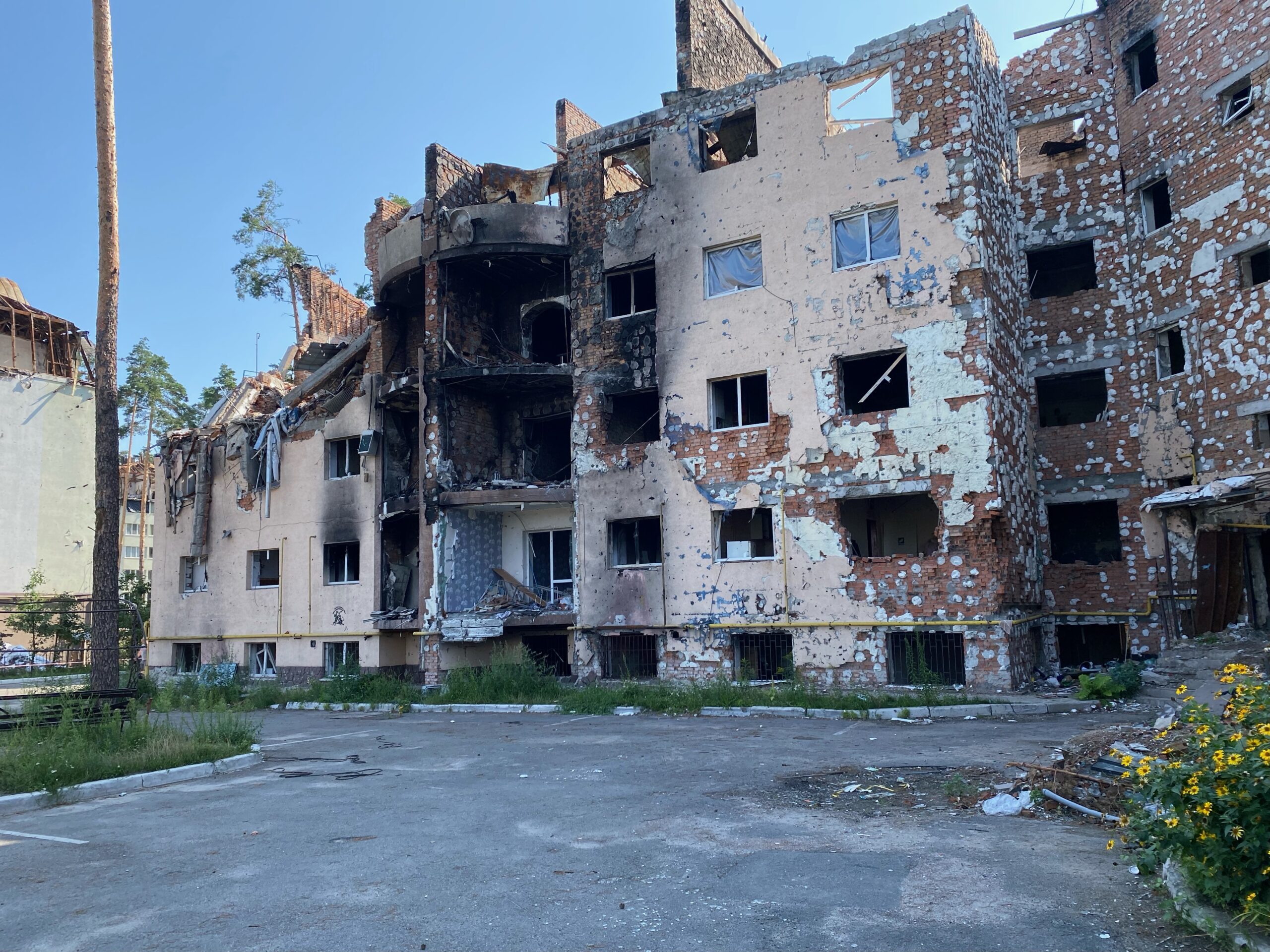
The war has also produced a deep hostility toward Russia in much of the country that will not dissipate soon, if ever. Russian has come to be seen by many in Ukraine as the occupier’s language. Even those who regard it as their first language, including ethnic Russians (especially young people), have switched to Ukrainian, smuggling in Russian words when their vocabulary comes up short. The anti-Russian sentiments typically associated with western Ukraine may be slowly spreading to the country’s Russian-speaking regions—for example, Odesa and Mykolaiv.
Indeed, the war has kindled a greater hostility toward the Russian people as a whole. Several people I met remarked that the war’s savagery proves that Russians are not a normal people. “All Russians?” I asked, suggesting that this was a crude generalization and stereotype. “Yes,” they replied. They wondered how I could not understand this after seeing places such as Bucha, Hostomel, and Irpin, on Kyiv’s northern outskirts, where Russian troops committed atrocities, where bombed-out building are still visible. Surely I knew that Russian soldiers had defecated in the living quarters of Ukrainian homes they had occupied, scrawled venomous messages on buildings, and tortured and executed civilians?
In this climate the reflexive tendency to differentiate between eastern and western Ukraine, always simplistic, has become even more so. The fate of places such as Donbas and Mariupol, a port city on the Sea of Azov, make clear that Ukraine’s Russian-majority regions have witnessed vastly more death and destruction than its other parts. This contradicts Vladimir Putin’s claims that he invaded Ukraine partly to protect its ethnic Russians from persecution from latter-day Nazis and Banderites, contemporary acolytes of Stepan Bandera, who collaborated with and aided the Nazi occupiers during World War II in their fight for an independent Ukrainian state.
Though I’ve traveled to the Donbas before, I did not on this occasion because that would have meant wading into a battlefield. Many people there, and others throughout the country, are of the view that Ukraine should not cut itself adrift from Russia. Still, one has to wonder how closely people in areas traditionally, although not entirely accurately, labeled for convenience as Russophone feel connected to Russia now. The war has changed how Ukrainians, regardless of ethnicity and language preference, think about their identity.
Ukraine is hardly the only country where the place of ethnicity and language in shaping identity is complex. Identity, as scholars have shown, may turn on the ethnicity of one or both parents, the language of the ethnic group that people embrace, or the language people use to think and speak. Nailing down people’s identity in Ukraine is even harder because there has not been a national census in over two decades.
Unsurprisingly, therefore, the push to make Ukrainian mandatory (which does not mean Russian is or will be banned; you hear it everywhere, save in the country’s western parts) evokes varying sentiments, particularly in wartime. Some are convinced that it must be done, especially following the Russian invasion. Others believe Ukrainian will naturally become the country’s defining language as the post-Soviet generations become the majority, and that mandating its use will prove divisive. Still others, above all older native Russian speakers (who can be ethnic Ukrainians or Russians), bristle at anything that they consider compulsion.
I asked some of my interlocutors whether language policy that favors Ukrainian was wise in a country containing millions of Russian speakers who tend to be concentrated in the east and south, especially when Russia stokes their anxieties about becoming “the other.”
My question was irrelevant in one sense. Ukraine’s linguistic separation from Russia, underway even before the war, has been accelerated by the fighting. The government deems it essential to forge a distinctive national identity. A recent law (passed before the war, it will take effect in January) requires that Ukrainian be used in government, businesses, and schools. When Russian-language public schools reopen in the fall, they must switch to instruction in Ukrainian. Waitstaff and hotel clerks, indeed all businesses in the service sector, must use Ukrainian first and can use another language only if necessary, otherwise they risk a $200 penalty.
Putin insists, as he did in a July article, that Ukrainians and Russians are really one people united by a shared history and culture. Ironically, he may be remembered as arguably the greatest contributor to the solidification of a distinctive Ukrainian national identity—one marked by animus toward Russia and the determination to turn away from it and toward Europe.
Russia thought it would quickly and decisively achieve a battlefield victory; that it hasn’t has induced Putin to target Ukraine’s infrastructure even more in hopes that the Ukrainian government will be unable to sustain its armed resistance.
The war has already exacted a heavy toll on the Ukrainian economy. Prime Minister Denis Smyhal expects that GDP could shrink by more than one-third this year alone and the National Bank projects that inflation, too, will reach over 30 percent. Next year’s budget deficit is projected to be $38 billion—that’s more than one-fifth of Ukraine’s current GDP. The European Union and the World Bank reckon that the bill for rebuilding the economy will be $349 billion, but the destruction increases daily and the war could still drag on for years.
Despite the carnage, destruction, and fear produced by the war, though, people have not only managed to create space to live their lives but also to make sacrifices to help their country even when it involves great personal risk. These endeavors inspire faith in Ukraine’s future.
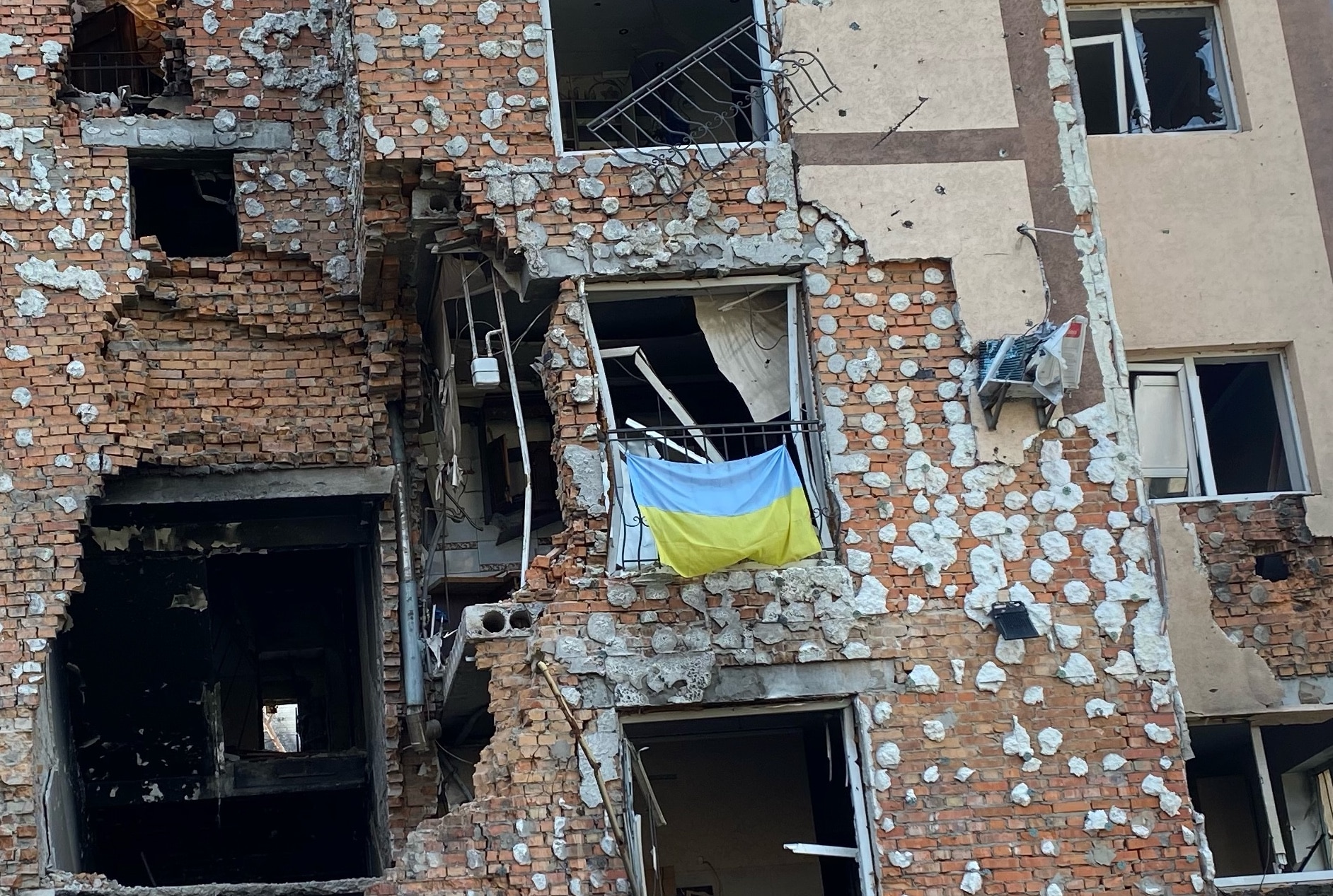
Nikopol, a city located across the Dnipro River from the Zaporizhzhia nuclear power plant, is visible if you stand at the river’s shore (not advisable: you are in range of Russian artillery across the river). The city is unprepossessing at the best of times; the refugee influx, collapse of businesses, and constant shelling from Russian troops (including the day before I arrived) has made it worse. A local businessman, a “mini oligarch,” as my friend labeled him impishly, called it “a dead city.” That’s not hyperbole. Though we were there on a beautiful, sunny day, the streets, parks, and playgrounds seemed empty. Nikopol has become a dried-out husk.
Yet virtually none of the doctors and staff at the local children’s hospital—which is cheerily decorated, spotless, and well equipped—have left, unlike so many townspeople who concluded that Nikopol was too dangerous due to frequent Russian shelling or the risk that Russians could take the city. The exodus has included many refugees, save apparently the hardened souls from Mariupol who have experienced far worse, and local people with skills the city’s economy needs desperately. The doctor who showed us around could certainly have found a job in a safer, quieter, and lovelier place in Ukraine, of which there are many. Yet he chose to stay in a city from which, my friend said, people flee to their dachas to escape the nighttime shelling, or drive to villages and sleep in their cars if they can’t afford a rural abode.
In Dnipro, which has also been rocketed continually, an NGO runs a shelter for IDPs. The employees of the NGO have likewise remained at their posts out of a sense of civic duty. The overwhelming majority of the residents are women and children who have fled other parts of Ukraine. The youngest is a month old. They are permitted to stay for a week but then must move on—but to where exactly?—to make room for the next batch of arrivals. Community restaurants donate meals to the shelter and local and foreign NGOs provide other supplies. The accommodations are barebones: makeshift bunkbeds draped with threadbare sheets to create a modicum of privacy. Yet for people fleeing death, the spartan refuge, even if transitory, is a lifeline.
The man who appeared to be in charge observed wearily that obtaining basic supplies is a constant struggle that requires day-to-day adaptation and improvisation—and all while suppressing the fear of bombardment, I thought. The harried young staff who tend to the many needs of the IDPs could have moved to safer venues. Yet, like the employees of the Nikopol hospital, they have stayed at their jobs.
Nikopol and Dnipro are not like Kyiv, Lviv, or Cherkasy; the risks created by war are visceral and unrelenting. The urge to leave must be overwhelming at times, especially for young, well-educated people, who can more easily move elsewhere, find jobs, and begin a new life. That makes the determination of those who have stayed to serve others remarkable. The examples of civic-mindedness in Nikopol and Dnipro can be found in various forms elsewhere in Ukraine.
The focus on Ukraine’s front is understandable, but how the war has reshaped life in the rear, and especially the good that people have done in dangerous circumstances, is also worth recording and remembering. Some changes unfolding in the rear may prove problematic, but others augur well for the country’s future, especially once it begins the long, hard recovery of rebuilding and reintegration that could takes decades to accomplish.
